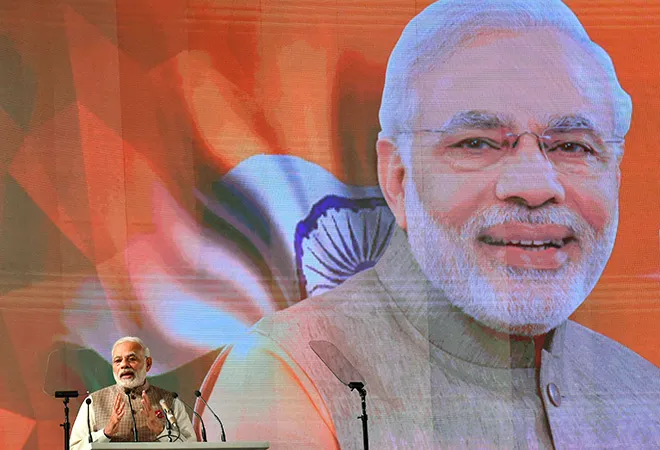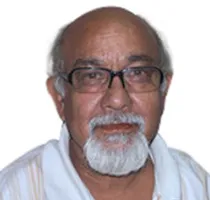
The BJP’s huge victory in the 2014 general elections was the result of many factors, including Prime Minister Narendra Modi’s charismatic appeal and a well-oiled electoral machinery starting from booth level.
The BJP today rules 21 states, either directly or with its allies. It has a countrywide presence. This success has come its way in the last four years and has been achieved through Modi’s campaigning and BJP chief Amit Shah’s electoral strategy and prowess to run the election machine.
It is also true that the opposition since 2014 has been winning Lok Sabha by-elections, bringing down the BJP’s strength from 282 to 273 seats. Are these victories a sign of defeat for the Modi-Shah combine in 2019?
The question is challenging and there are no easy answers to it. A closer look at the prevailing political scenario in the country definitely offers some clues.
The defeat of the BJP candidates in the three Lok Sabha bypolls this month in the two Hindi heartland states of Uttar Pradesh and Bihar sending 120 MPs to the House of People has readied the ground for efforts for unity of the anti-Modi opposition.
However, the exact shape and depth of the anti-BJP front is yet to materialise concretely but bypoll victories of the Congress in Rajasthan, of the Samajwadi Party (SP) in UP and of the Rashtriya Janata Dal (RJD) in Bihar have undoubtedly made the non-BJP opposition parties confident that the Modi-Shah fort is no more impregnable and can be demolished.
The defeat of the BJP candidates in the politically crucial constituencies that were vacated by State Chief Minister Yogi Adityanath and Deputy Chief Minister Keshav Prasad Maurya by SP candidates became possible because of the electoral understanding between the erstwhile arch rivals — the SP and the Bahujan Samaj Party (BSP). In a shrewd move, former UP chief minister Mayawati had extended her party support to the SP in the two Lok Sabha bypolls.
The defeat of the BJP candidates in the politically crucial constituencies that were vacated by State Chief Minister Yogi Adityanath and Deputy Chief Minister Keshav Prasad Maurya by SP candidates became possible because of the electoral understanding between the erstwhile arch rivals — the SP and the Bahujan Samaj Party (BSP).
If the SP-BSP electoral understanding reached during the two elections continues and the two together succeed in forging an alliance taking the Congress and the Rashtriya Lok Dal (RLD) of former Union minister Ajit Singh, then the BJP-led NDA would face an uphill task. The NDA had won 73 seats in 2014 in the biggest state. It would be a miracle if the NDA is able to retain its number of seats from UP in the face of a united front.
Therefore, all efforts are likely to be undertaken by the BJP to thwart the evolving electoral understanding between the two UP leaders, and the coming months are going to witness a see-saw battle between the two political rivals.
With every passing day, it is becoming tougher for the NDA to counter the rising popularity of jailed RJD leader and former chief minister Lalu Prasad in Bihar. The RJD led alliance is going to create a high degree of opposition unity that is likely to make the NDA task of repeating the 2014 electoral performance difficult, if not impossible.
In the evolving process of the unity of the opposition, several parallel attempts are currently underway. On 12 March, 20 like-minded parties attended a dinner hosted by UPA chairperson Sonia Gandhi where the discussion veered around on ways and means to coordinate efforts to oppose the BJP-led NDA government of Prime Minister Narendra Modi in the Parliament and outside.
Regional leaders, meanwhile, are also making their moves to float the idea of a non-BJP and non-Congress front. Telangana Chief Minister K. Chandrashekhar Rao (KCR) met West Bengal Chief Minister Mamata Banerjee on 19 March. After the meeting, Rao told the media that a “very good beginning” has been made on a federal front to take on the BJP and the Congress and added that the two leaders had come to an “understanding” that would be revealed later.
However, the West Bengal Chief Minister was more guarded in her comment, saying: “It is not like whatever Mr. Rao has said, I completely agree with that. But let him speak. If something happens you will get to know.”
It is more than obvious that both leaders are still weighing the pros and cons of such a front and the moves are exploratory in nature as the political class waits to read and decipher the public mind before taking a plunge.
Nationalist Congress Party (NCP) supremo Sharad Pawar too has convened a meeting of the opposition parties in Delhi on 27-28 March to discuss the roadmap of the opposition front to take on the BJP. Earlier in January this year, Pawar had led the “Save the Constitution march” in Mumbai for which the regional parties had sent their representatives. The West Bengal Chief Minister has confirmed of her presence at the meeting. She is expected to meet Congress President Rahul Gandhi also.
In fact, non-BJP opposition leaders are still not very clear about their respective objectives. What is irking them or disturbing them is the arrogance of the BJP leaders, mainly that of Modi and Shah.
Efforts to forge a common front to take on the BJP-led NDA crucially hinge on two important factors. What is the political relevance of the Congress and who should lead the front. At present, there is no clarity on these two questions.
Regional parties and their leaders are invariably the promoters of the idea of a non-BJP or non-Congress third front. This idea gets fresh impetus whenever the Congress is weak. If the third front governments of 1989 and 1996 were successful and had run for full terms, the country’s electorate would not have been hesitant to give it another chance. Because of the past failures, the idea of a third front does not fire the people’s imagination.
In fact, efforts to forge a common front to take on the BJP-led NDA crucially hinge on two important factors. What is the political relevance of the Congress and who should lead the front. At present, there is no clarity on these two questions. Political developments in the coming months may clear the confusion.
Apart from the Hindi heartland states, the BJP’s presence in Karnataka is formidable and the coming Assembly elections in the next two months are going to be crucial whose electoral outcome would set the tone for the 2019 general elections. The BJP had won 17 out of the total 28 seats in Karnataka in 2014. A defeat of the BJP and retaining of the power by the Congress in this southern state would clear the political confusion.
After the Karnataka elections, the assembly elections in Rajasthan, Madhya Pradesh and Chhattisgarh would set the final stage for the general election battle.
In case, the Congress fail to get another term in Karnataka and fails to capture power in the three states later, then the shape of the anti-BJP front is going to be different compared to a reverse scenario of the Congress being triumphant in all the four states.
In the ongoing game of political chess, Modi-Shah combine has many cards up their sleeves that have the potential of derailing the unity efforts. The Prime Minister may decide to force an early general election along with the elections of MP, Rajasthan, Chhattisgarh and Mizoram, thus catching his opponents on a wrong foot.
In that case too, the dynamics of the opposition unity is going to be different.
The views expressed above belong to the author(s). ORF research and analyses now available on Telegram! Click here to access our curated content — blogs, longforms and interviews.




 PREV
PREV


